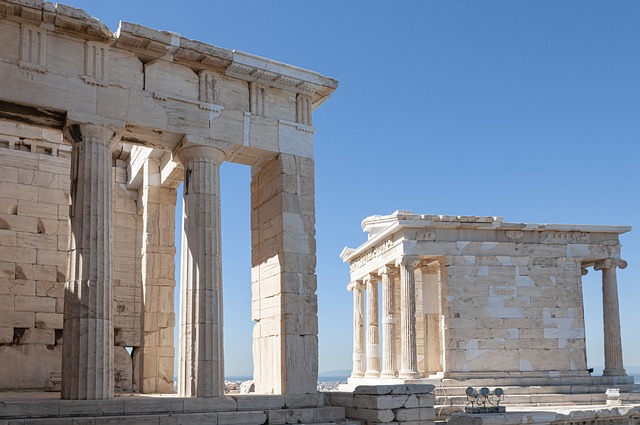The Art of Travel: Navigating the Best Museums Worldwide
Traveling is one of life’s greatest pleasures, a way to step outside one’s routine and explore the world in all its beauty, diversity, and complexity. For art lovers, there is no better way to engage with a culture than through its museums. Museums are portals to understanding history, heritage, and the creative spirit that define a nation. Exploration of these institutions not only enhances one’s appreciation of global art but also offers enriching personal experiences that withstand the test of time. In this article, we will delve into the captivating world of museums, exploring some of the finest collections globally and providing tips for navigating these cultural treasures.
The Significance of Museums in Travel
Museums serve essential functions in society. They are storage spaces for history, guardians of culture, and centers of education. A visit to a museum transforms a city into a living history book, where each artifact tells a story. Understanding these narratives can deepen our connection to the past and foster a greater appreciation for the artistic endeavors of humanity.
Traveling specifically to visit museums can offer unique insights into a destination’s identity. For instance, the architecture and layout of a museum can reflect the values and aspirations of the culture it represents. Furthermore, many museums host temporary exhibitions, allowing visitors to see one-of-a-kind pieces that are not part of the permanent collection. This enhances the adventure of discovery, making every visit an exclusive experience.
Top Museums You Shouldn’t Miss
While there are countless museums around the world worth visiting, some stand out due to their renowned collections, architectural significance, and immersive visitor experiences. Below are descriptions of a few of the most monumental museums that travelers should include in their itineraries:
The Louvre – Paris, France
The Louvre is not only the largest art museum in the world but also one of the most visited. Located in the heart of Paris, it was originally a royal palace before becoming a public museum during the French Revolution. Within its glass pyramid entrance lies a vast collection that spans thousands of years and various civilizations, including ancient Egyptian artifacts, Greek sculptures, and Renaissance masterpieces.
Some highlights include the Mona Lisa and the Venus de Milo. However, due to the museum’s immense size, it is advisable to plan your visit beforehand, focusing on specific galleries to avoid feeling overwhelmed.
The British Museum – London, United Kingdom
The British Museum is an architectural marvel that showcases human history, art, and culture from around the world. Established in 1753, it houses a collection of over eight million works. Its famous artifacts include the Rosetta Stone and the Elgin Marbles. Many exhibits are free, making it accessible to a wider audience.
One remarkable feature of The British Museum is its ability to narrate complex histories through its exhibits. Visitors can explore the interconnectedness of human civilization and see how cultures have influenced one another throughout time.
The Metropolitan Museum of Art, often referred to as “The Met,” is one of the largest and most prestigious museums in the United States. Located on the edge of Central Park, this institution houses over two million works of art, ranging from ancient Egyptian artifacts to contemporary pieces. The museum is notable not only for its collections but also for its beautiful location, which offers stunning views of the park.
The Met’s annual Costume Institute Gala is a highlight of the social calendar, celebrating fashion as an art form. The museum also emphasizes educational programs and innovative exhibits that encourage visitors to engage with art in new and meaningful ways.
The Uffizi Gallery is a testament to the Renaissance period, showcasing masterpieces by artists such as Botticelli, Michelangelo, and Leonardo da Vinci. Situated in Florence, the gallery itself is a piece of art, built in the 16th century as offices for Florentine magistrates. Visitors often flock to admire works like “The Birth of Venus” and “Primavera,” but the museum also grants insights into the artistic techniques and philosophies of the time.
Given the popularity of the Uffizi, it is strongly recommended to reserve tickets in advance and consider guided tours to fully appreciate the nuances of the art and history displayed within its walls.
The State Hermitage Museum is often regarded as one of the finest art museums in the world. Comprising several buildings, including the Winter Palace, it boasts a collection of over three million items, ranging from prehistoric artifacts to modern artworks. The museum’s architecture is equally stunning, with opulent halls and gold-leaf decor.
What sets the Hermitage apart is not just its volume of art but also the diversity of its collection, including pieces by Rembrandt, Van Gogh, and Picasso. Visitors can explore art from different cultures, making it a true treasure trove of creativity.
Tips for an Enriching Museum Experience
When visiting museums around the world, a few strategies can enhance your experience, turning a simple visit into an educational and memorable adventure:
First, plan your journey in advance. Many museums have extensive collections, so it’s helpful to prioritize the exhibits you want to see. Check online for any temporary exhibitions, guided tours, or workshops you may want to participate in during your visit. Setting an itinerary allows you to manage your time efficiently and enjoy more of what each museum has to offer.
Second, consider visiting during off-peak hours. Early mornings or late afternoons tend to be less crowded, allowing for a more peaceful experience where you can truly engage with the art. Additionally, some museums offer special late-night events or free entry days, so keep an eye out for such opportunities.
Lastly, allow your curiosity to guide you. Once at the museum, take the time to wander and explore. Sometimes the most rewarding experiences come from unexpected discoveries. Don’t hesitate to engage with the artwork; read placards, participate in interactive exhibits, or attend workshops. These activities foster deeper connections and help to contextualize what you see.
Embracing Diverse Cultural Perspectives
Art reflects the diverse cultural heritage of humanity, and every museum serves as a prism through which visitors can understand that culture. The stories told through art can challenge beliefs and broaden perspectives, facilitating meaningful discussions about identity, society, and the human experience. Engaging with art from different cultures can foster empathy and inspire creativity in your own life.
A more recent trend in the museum world is the increasing emphasis on inclusivity and accessibility. Many institutions are working diligently to ensure that all visitors, regardless of background or ability, can fully experience what they have to offer. Look for museums that provide multilingual guides, accessible facilities, and inclusive programming. Embracing these efforts can lead to a more rewarding experience for everyone.
Conclusion: The Journey Continues
The museums of the world offer a rich tapestry of experiences for those willing to explore them. From the storied halls of the Louvre to the contemporary displays of The Met, each museum presents a unique opportunity to engage with art, history, and the shared human narrative.
As you delve into these cultural jewels, remember that the journey doesn’t end with the museum visit. Each piece of art, each exhibit, or simply the act of travel ignites a spark of curiosity, leading you further on your quest for knowledge and connection. Embrace the art of travel, and let the world of museums guide you to new adventures filled with enriching discoveries.


